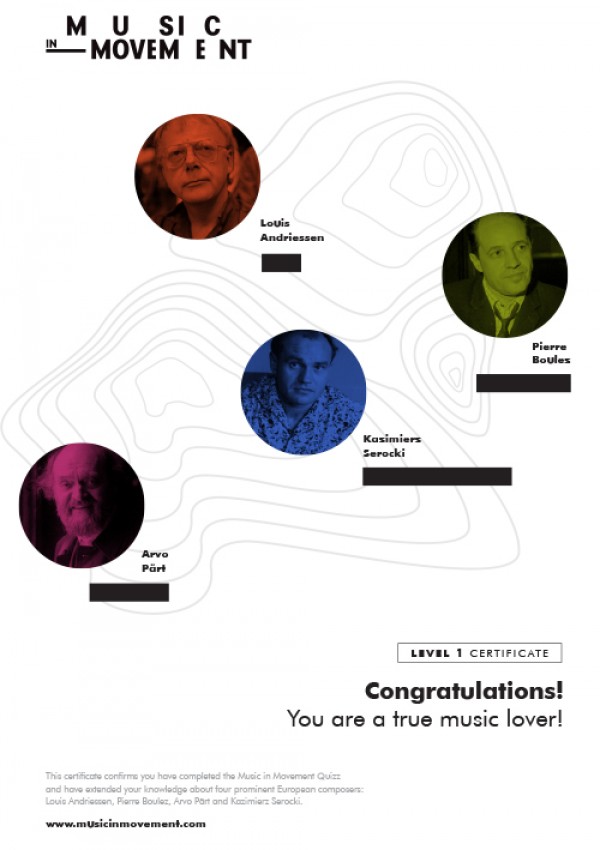MiM quiz – Expert level / Education
Remember, this quiz is not about testing your knowledge about contemporary music. It's all about getting to know the four composers - their music, techniques, but also inspirations and private stories. We invite you to take on this challenge - discover the universe of four personalities and dive in into their music.
Creative periods - Pierre Boulez
Which work by the composer is earlier? Which is later?
The earlier one should be indicated.
Discreet use of live electronics (delay, reverb diversification) points to a later period of Pierre Boulez creations, associated with the IRCAM technology (Dialogue de l'ombre double, 1985). In the case of Le marteau sans maître (1954), the earlier date is indicated, inter alia, by the melody characteristic for the avant-garde of the 50s.
Figures (from outside the world of music) important to the four composers:
Match the figure to a composer.
Kazimierz Serocki wrote music to Jerzy Hoffman’s Oscar-nominated film The Deluge.
In 1976, at the Wagner festival in Bayreuth, Pierre Boulez conducted Der Ring des Nibelungen in a production directed by Patrice Chéreau – to this day considered to be one of the best stagings of Wagner’s cycle.
The most popular and exemplary recordings of Arvo Pärt’s music have been issued by the ECM label headed by Manfred Eicher.
Peter Greenaway worked with Louis Andriessen on several musical-film and musical-stage projects (M is for Man, Music, Mozart; Rosa, Writing to Vermeer).
Which ones among the four composers wrote music for the youngest performers?
Match each statement with a composer.
Pierre Boulez was once asked to write a piece for an album of modern compositions for piano learners. He did comply with the request and the piece was published on the album, but Une page d’éphéméride is a very demanding composition technically – in any case Boulez himself admitted that he seemed to be unable to write anything simpler.
Kazimierz Serocki’s The Gnomes, a collection of pieces for young pianists, became very popular and was even arranged in various transcriptions for other instruments.
In Louis Andriessen’s Dancing on the Bones, a piece the composer described as a “diabolical scherzo”, a children’s choir sings about what happens to the body after death.
Arvo Pärt’s “children’s” works were issued on the Songs from Childhood album.
Read more about his Music for Children.
20th- and 21st-century composers would often explain their composition techniques and engage in more general theoretical reflections
Many published books or articles; some conducted lectures at universities or courses, sometimes also commented on their works during encounters with non-expert audiences. But there were also those who did not comment on their oeuvres, assuming that music spoke for itself.
He published many books on music written by himself and other composers (especially 20th-century composers). In addition to educational and theoretical work addressed to specialists (composers, musicians, theorists), he devoted a lot of attention to providing comments on contemporary works for concertgoers, including young people.
He lectured in composition at conservatories and courses for young composers. He wrote one book – but he did not devote it to his own oeuvre but to the music of a composer that was artistically particularly close to him.
He did not give interviews and was reluctant to comment on his own oeuvre. He included his reflections on the foundations of his music in several hitherto unpublished lectures.
He did not write about his own music, but in interviews and numerous contributions on various occasions he said a lot about it.
Well done!
We hope you enjoyed the experience!
You can now share & save your MiM certificate!

